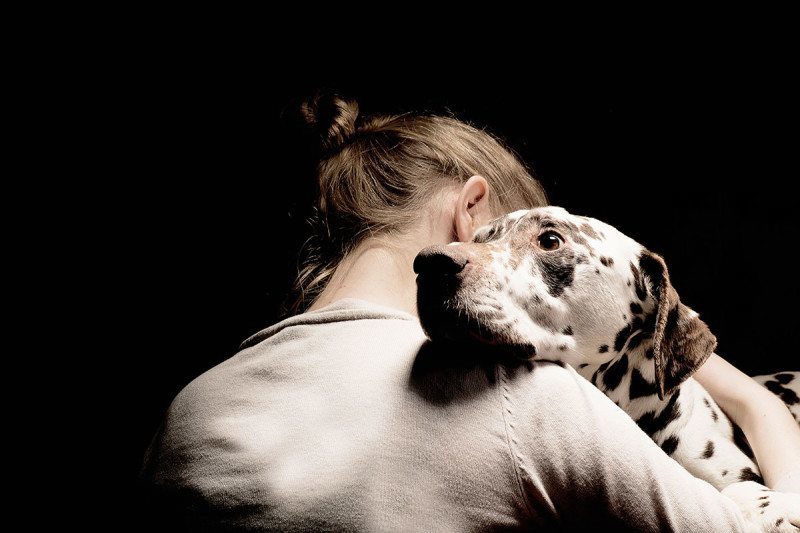
© Gary John Norman/Getty
Dog owners swear that their furry best friend is in tune with their emotions. Now it seems this feeling of interspecies connection is real: dogs can smell your emotional state, and adopt your emotions as their own.
Science had already shown that dogs can see and hear the signs of human emotions, says
Biagio D'Aniello of the University of Naples "Federico II", Italy. But nobody had studied whether dogs could pick up on olfactory cues from humans.
"The role of the olfactory system has been largely underestimated, maybe because our own species is more focused on the visual system," says D'Aniello. However, dogs' sense of smell is far superior to ours.
D'Aniello and his colleagues tested whether dogs could sniff out human emotions by smell alone. First, human volunteers watched videos designed to cause fear or happiness, or a neutral response, and the team collected samples of their sweat.
Next, the researchers presented these odour samples to domestic dogs, and monitored the dogs' behaviours and heart rates.
Dogs exposed to fear smells showed more signs of stress than those exposed to happy or neutral smells. They also had higher heart rates, and sought more reassurance from their owners and made less social contact with strangers.We've always known that dogs collect information about their social partners through different sensory channels to decide how to respond to situations, says
Márta Gácsi of Eötvös Loránd University in Budapest. "However, it is not easy to investigate such processes so that we can unfold the mechanisms and separate the channels," as this study has done, explains Gácsi.
Look at my faceD'Aniello's study suggests humans can inadvertently hijack their dogs' emotions by releasing smells. A second study suggests
dogs can return the favour, using their expressive faces.Juliane Kaminski of the University of Portsmouth, UK, and her colleagues have found that dogs' faces are most expressive when they know people are looking at them.
The researchers introduced dogs to a human who was either looking at them or facing away, and either presenting food or offering nothing. The team analysed how much the dogs' facial movements varied in the four scenarios.
They found that the dogs' facial expressions varied the most when the person was looking at them. In contrast, Kaminski says there was no sign of a "dinner table effect", "which would predict that dogs try and look super-cute when they want something from the humans."
Puppy-dog eyes"This adds to a growing body of evidence suggesting that
dogs are very sensitive to human attention," says Kaminski.
It's not clear precisely how dogs visually signal us and how we respond, says
Monique Udell of Oregon State University in Corvallis. "This kind of research is needed to fully understand the bidirectional nature of the human-dog relationship."
However, there is evidence that we are susceptible to these signals. Kaminski found that
when dogs were being watched they often raised their eyebrows in a particular way. This eyebrow raise is known to give shelter dogs a better chance of being rehomed. It may make the dogs' eyes look "sad" or infant-like, creating an empathetic response.It is not clear what role, if any, the domestication of dogs played in the development of these behaviours. It has been suggested that
dogs' striking emotional intelligence towards humans is a product of the thousands of years we have spent with them.
Journal reference: Animal Cognition, DOI: 10.1007/s10071-017-1139-xScientific Reports, DOI:
10.1038/s41598-017-12781-x
Reader Comments
The BEST
Its mini-Jonathan
[Link]
Mind you we ve got our greaseballs here too
Just yesterday.... more shit hit the fan and 2 bigwigs today as well.
[Link]